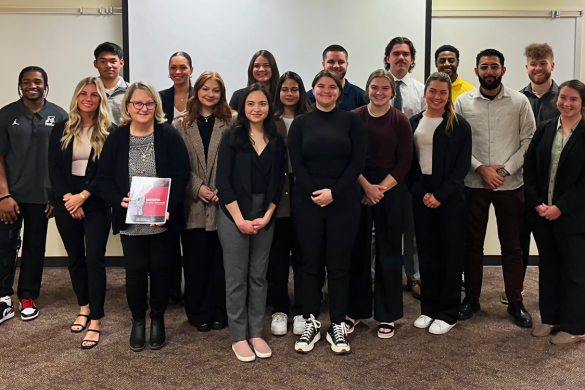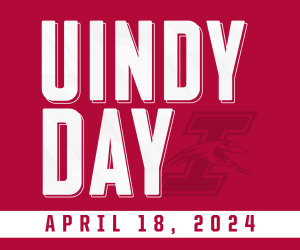The University of Indianapolis was recently named the anchor institution for a new Indianapolis Department of Public Safety neighborhood improvement project. A new institution known as a Neighborhood Service Area has been established to work with the area to establish solutions for neighborhood problems.
According to a DPS press release, NSAs are “intended to improve the quality of life for Indianapolis residents by combating crime and addressing the factors that often accompany criminal activity within a neighborhood.” The boundaries of the UIndy NSA will be East Street, I-465, Keystone Avenue and Sumner Avenue.
Associate Vice President of Community Relations and Special Assistant to the President David Wantz said the main idea of the NSA is to help a neighborhood to help itself grow.
“The whole point is to build capacity in a neighborhood to solve its own problems. A city can go through, and they can just completely clear the ground, but that doesn’t get anything positive started,” Wantz said. “The neighbors can get something positive started.”
According to the DPS release, the UIndy Community Action Team program will be piloted for one year, with public meetings held monthly during the first phase. DPS Chief Communications Officer Al Larsen said the next meeting will be held at the University Heights United Methodist Church on April 8.
According to Wantz the CAT meetings will be about an hour and a half. Attendees will have a meet and greet, then a city agency or multiple agencies will tell attendees how to get in touch and explain what services they offer and, finally, there will be a brainstorming session.
Wantz said that officials from UIndy, the city government, local business owners, residents and—when they can—state representatives will likely come.
Wantz said that the meetings will make the sessions for the meetings of the current neighborhood association more productive.
“University Heights Neighborhood Association is a really strong neighborhood association and they have regular meetings,” Wantz said. “The CAT meetings will help the association learn about city services and do some problem solving so the regular neighborhood association meetings can do other things. They’re not just going to devolve to complaint sessions.”
Once the UIndy NSA pilot period is over, two more NSAs are expected to be established and multiple more NSAs are expected to expand city-wide over the next six years, according to the DPS release.
Wantz said that the NSA will be beneficial to everyone, not just to UIndy or the other future anchor institutions. He said everyone in the community can gain from the growth the NSA will foster.
“The more we can say to folks, ‘This is a great place to live and work,’ the more is attracts businesses, the more it attracts investments, the more it attracts residents, [and] the easier it is to attract new students and faculty. It all works hand-in-hand,” Wantz said. “So it’s not just good for us. It’s good for the neighbors. … It’s good for everybody.”
Wantz said that the anchor institution serves several purposes—to lend credibility, make introductions and lend a hand with projects that the neighbors develop. Some things that Wantz cited as areas that UIndy can help with are things as simple as finding a meeting location to coordinating student and faculty involvement in the projects.
According to Wantz, although the anchor will have much involvement, the real decision-making will come from the neighbors. He said that playing a hands-off role will allow the residents and businesses to make their own decisions at the grassroots level rather than those coming from the ivory tower. He also said that solutions will be better for the neighborhood when they come from the neighbors themselves.
“One thing that the university or any anchor should not do is say, ‘We know what’s best for you, and we’re going to help you eat your carrots,’” he said.
Wantz said that UIndy’s more than 100-year history in the area, its commitment to community service and its huge economic impact on the South side and on Marion county as a whole are some of the things that make UIndy an anchor.
Indianapolis Director of Public Safety Troy Riggs said that UIndy’s position as a major community player makes the institution a natural choice and an example for the future.
“It was an easy decision to identify UIndy as the anchor institution for our first Neighborhood Service Area. Their strength within the neighborhood and commitment to improving the quality of life for the residents that live and work there is outstanding,” Riggs said. “We feel very good about the example this first NSA will set for other neighborhoods around Indianapolis.”






